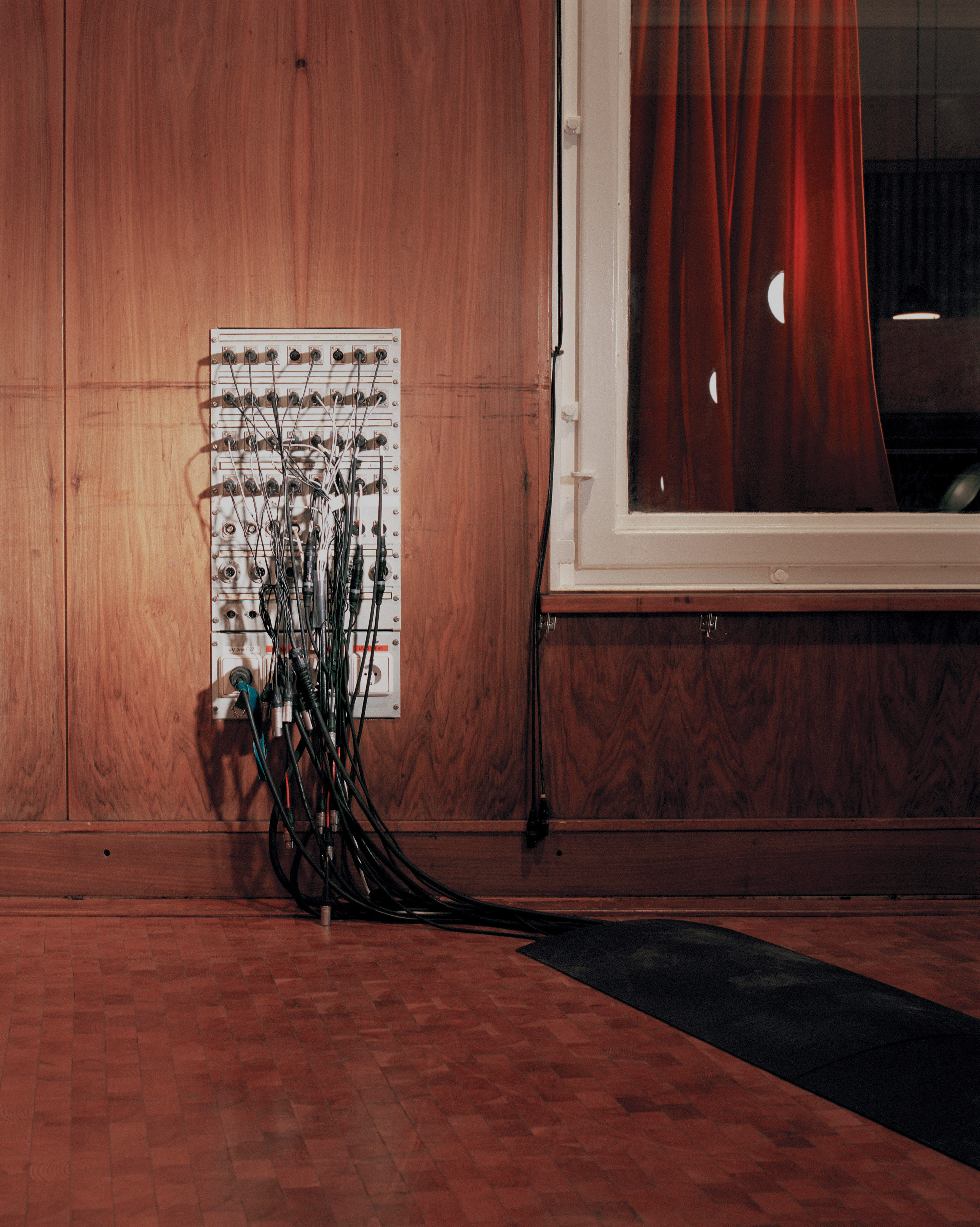A couple of years ago beyerdynamic debuted the latest versions of their top dynamic studio headphones. The DT 1770 PRO closed-back and DT 1990 PRO open-back versions feature what beyerdynamic calls the "Tesla" driver system, which is basically a strong magnet able to quickly and accurately drive the ear speakers' cones.
Both models are larger and heavier compared to a cheap pair of tracking 'phones in the typical studio, but neither left me feeling neck-sore after hours of listening. Both feature velour-covered ear pads and a metal headband. Both come packed in a plastic clamshell case with detachable straight-wire and coiled cables and a screw-on adapter for 1/4-inch jacks (both cords terminate in 1/8-inch plugs). The DT 1770 includes extra ear pads covered in leatherette, which are intended to provide greater isolation from outside sounds at the expense of the comfortable feel of the stock velour pads. The DT 1990 also includes two pairs of ear pads, both velour, which provide two different sound profiles. The B Pads, which are attached to the headphones when they leave the factory, provide what beyerdynamic describes as "well-balanced" with "a slight bass boost." Alternately, the A Pads provide what beyerdynamic describes as a "deliberately analytical" sound.
I first took a careful listen to both beyerdynamic models, switching back and forth while listening to a variety of music I know well, plus some FM radio dial-spinning. For a while, I kept the speakers on, with the level turned up, and the DT 1770s definitely provided isolation, proving they are good for their stated purpose of live sound work and studio monitoring in a less than quiet environment. But I preferred the sound quality of the open-back DT 1990s, which offered a more airy and substantial presentation on the far ends of the frequency range while presenting the midrange in a less nasal tonality. I generally preferred the B Pads on the DT 1990s and thought the bass boost was "slight" indeed and generally useful. I kept it in mind while doing some rough mixes, and they ended up sounding just fine on big speakers capable of producing low bass. Changing the earpads was no little feat; in fact, it was a bit of a pain. For all that work, the A Pads didn't provide all that different a sound profile to my ears.
Next, I compared the DT 1770s to other (less expensive) closed-backs at hand, Audio-Technica ATH-M50s [Tape Op #66] and Sony MDR-V600s with new earpads. The Japanese 'phones are noticeably brighter, accenting everything that's potentially harsh and ugly in the upper midrange/low treble area. But are they telling the truth, or just shining a fluorescent light on the sound? On the other hand, might that harshness be very helpful with live sound (you'll certainly hear any buzz, hash, or RFI problems)? The Sonys also didn't provide nearly as deep bass, and even with new, non-deteriorated earpads, they didn't isolate outside sound as well as the beyerdynamics did. But the Sony's low impedance (around 65 ohms) means they can be driven to brain-liquifying loud levels by just about any headphone amp, even a phone.
The Audio-Technicas, which are also much lower impedance than the DT 1770s, are more bass-extended and a little bit less harsh sounding than the Sonys, so they compare more favorably to the beyerdynamics. In fact, the sound differences between the DT 1770s and Audio-Technicas were most pronounced. The beyerdynamics' midrange was all there and sat in a balance I'd consider right with the treble. The Audio-Technicas' midrange seemed scooped out in comparison. Especially in the studio, with mixing and sweetening decisions, this is important. You're liable to overdo things if you're not hearing the midrange correctly. Versus the Japanese closed-back 'phones, the beyerdynamic DT 1770 sounds more balanced, provides as good (Audio-Technica) or better (Sony) isolation, and beyerdynamic's fabric-covered ear cushions are less sweaty and hot-feeling over time. Were I doing a lot of live sound work, I'd spring for the beyerdynamic DT 1770s over lower-cost competition.
Diving into the better-sounding world of open-back studio 'phones, I compared the beyerdynamic DT 1990s to my well-worn Sennheiser HD 650s [#43], which now retail for about $100 less than the beyerdynamics. The DT 1990s sounded brighter and, with the "bass boost" ear pads had slightly stronger deep bass. But the Sennheisers' inherent politeness was less fatiguing with uber-compressed rock and pop music and modern jazz recordings, which are generally brighter and harsher sounding than vintage fare (except the classic, in-your-face Blue Notes). I would call the beyerdynamic sound extended and unflinching, compared to the gentler quality of the Sennheiser sound.
Which would be better for professional work? Interesting question, because they both are accurate in that they reproduce properly recorded instruments as one would think they should sound. But you may choose the sharper/brighter critical edge provided by the DT 1990s – or not. I could work with either of these; I'd want to end up a tad "modern-sounding" with the Sennheisers and a tad "vintage-sounding" with the beyerdynamics in order for my work to translate well across today's many and varied sound reproduction platforms.
It's worth noting that the DT 1990s' 250 ohms impedance requires a little bit less driving power than the Sennheisers' 300 ohms. I hooked them both up to my Little Labs Monotor [#117] headphone amp and found I needed to bring the level up a click for the Sennheisers to be as loud as the beyerdynamics, but I doubt this will matter much with a half decent headphone amp. Both could be driven to comfortable listening levels by my iPhone 7 with the Lightning-to-headphone jack adapter.
I can heartily recommend both of beyerdynamic's top-line professional headphones. The DT 1770 and DT 1990 models sound very good, are comfortable to wear, and succeed at their stated target purposes.




_disp_horizontal_bw.jpg)